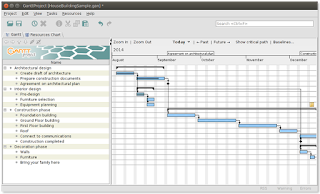Facebook Builds a VR Space, but Will Anyone Come?
Facebook on Tuesday announced the beta launch of Facebook Spaces, a new app that allows users to connect with friends and colleagues in an interactive virtual reality environment. Facebook Spaces is available for Oculus Rift and Touch at the Oculus Store.
The app provides a way for social media users to hang out as they might otherwise in person -- even bridging great distances -- noted Rachel Franklin, head of social VR at Facebook.
An avatar represents each user in Facebook Spaces. Its appearance is based on the user's photo, but can be further modified with choices of eye color, hairstyle and facial features that best fit the person's identity.
After creating a virtual persona, users can use Messenger to connect with friends, interact in 360-degree spaces, and utilize the app's selfie stick to further manipulate photos in the VR environment.
Social VR Becomes a Reality
Facebook acquired Oculus VR just over three years ago for a reported US$2 billion. The deal included $400 million in cash, along with 23.1 million in Facebook shares. Another $300 million would sweeten the deal if and when certain milestones were hit.
Facebook hinted at how it might socialize virtual reality in a demo at last year's F8 developer conference. Two employees engaged in a virtual space, even though the pair actually were 30 miles apart.
With this week's beta launch, the technology now is open to anyone with an Oculus Rift.
"This is the proof of concept right now," said Michael Inouye, principal analyst at ABI Research.
My VR Space
Facebook Spaces isn't exactly ready for the mainstream yet.
"It is still expensive to get into the tethered VR space that is required to access Facebook Spaces," Inouye told TechNewsWorld.
"It will cost about $1,000 for the hardware, plus the computer to run it, so this is still very much a beta and experimental technology," he said.
"The most interesting thing about Facebook Spaces right now is the real-world/VR integration," observed Stephanie Llamas, lead analyst for AR/VR technology at SuperData Research.
"There isn't a big enough VR install base -- particularly on the Oculus Rift -- for multiplayer or social applications to make sense on its own," she told TechNewsWorld.
"Allowing people to connect inside and outside of a headset is key," Llamas said, "and this also helps reach people beyond the guarded Oculus ecosystem and sparks the curiosity of a wider audience."
Real Problems to Solve
There are several issues that need to be addressed before Facebook Spaces can offer a true VR experience, which is why software has been released in beta form.
One significant problem is the barrier to entry on the VR side, said Llamas, especially as many users may not have many friends who already have bought into the Oculus platform.
"This will really need to work seamlessly and be more than a novelty to encourage people to come back," she cautioned. "Otherwise, curious users will log on once or twice and then just go back to regular Facebook -- something they are already comfortable with and they can quickly open on all their devices."
There are technological issues as well.
"There still needs to be better eye tracking and better tracking of movement, which would make this more immersing," said ABI Research's Inouye.
The Money Won't Be Virtual
One thing Facebook certainly will want to do is ensure that the technology can be monetized in the real world.
"That is the bigger issue Facebook could face," said Inouye.
"Will we see billboards in the backgrounds of the VR world, or will there be virtual items that are branded?" he wondered.
The biggest hurdle will be getting people to use it.
"There have been a lot of social worlds -- VR or otherwise -- that haven't played out," Inouye pointed out. "There wasn't enough to do -- and if none of your friends have Oculus, you are a party of one, which is contrary to how Facebook is all about connecting with your friends."
Follow this link to read more http://www.technewsworld.com/story/Facebook-Builds-a-VR-Space-but-Will-Anyone-Come-84468.html




Comments
Post a Comment